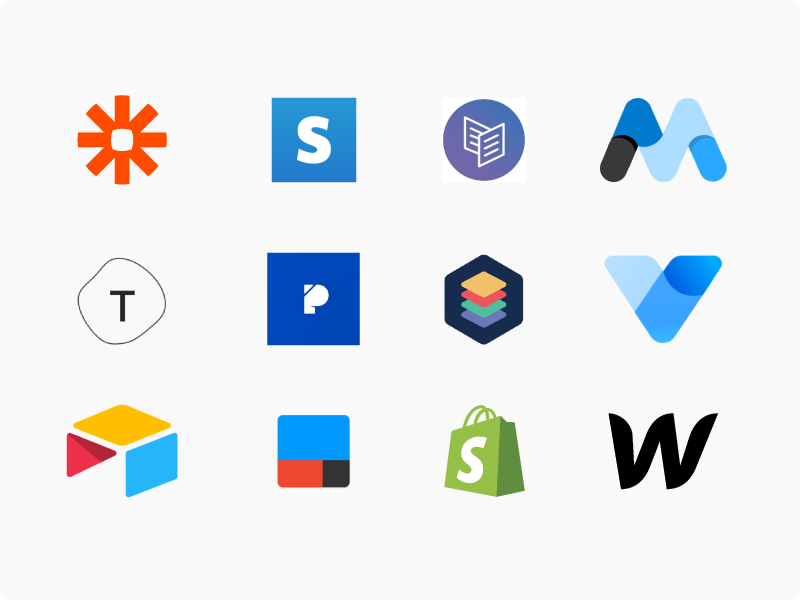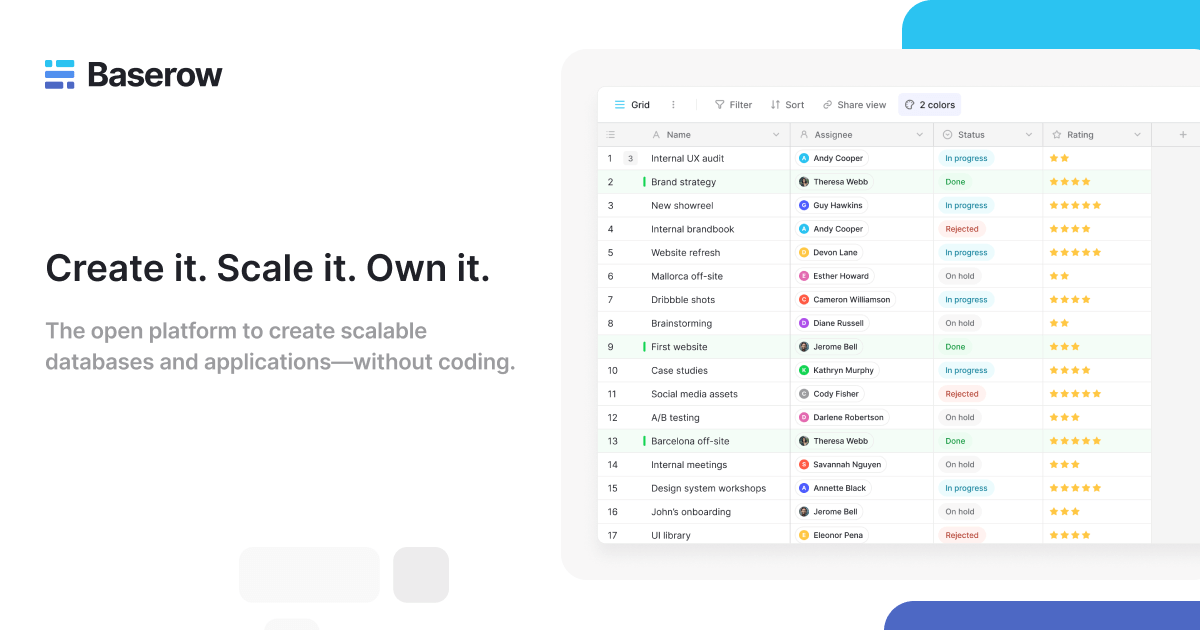Streamline Open System Data Source Creation with No-Code Growth Platforms
Streamline Open System Data Source Creation with No-Code Growth Platforms
Blog Article
Discover Exactly How Scalable Databases Can Be Used Without Coding to Boost Your Company Workflow
In today's busy organization atmosphere, the ability to manage and assess data effectively is extremely important. Scalable databases, particularly when coupled with no-code services, supply a transformative technique that encourages non-technical customers to streamline operations. By utilizing devices that require no coding proficiency, companies can enhance their operational abilities while decreasing dependence on IT resources. The actual question exists in comprehending just how these services can be customized to details company needs and what possible obstacles may occur in their application. Checking out these facets can brighten the course to operational quality.
Comprehending Scalable Databases
Scalable databases are important for modern company procedures, enabling organizations to effectively take care of increasing volumes of information without giving up performance. These data sources are developed to adjust and expand to the altering demands of a business, guaranteeing that they can take care of bigger datasets and more complex queries as business needs progress.
Recognizing scalable data sources includes recognizing their 2 primary kinds: vertical scaling and straight scaling. Vertical scaling, or "scaling up," includes adding more power (CPU, RAM) to an existing server to boost performance. On the other hand, straight scaling, or "scaling out," involves including extra web servers to distribute the lots, which typically leads to higher versatility and fault tolerance.
An additional important element is the style of scalable data sources, which can be either relational or non-relational. Relational data sources, such as MySQL and PostgreSQL, are structured and use SQL for queries, while non-relational data sources, like MongoDB and Cassandra, supply even more versatility with unstructured data.
Ultimately, understanding scalable databases is essential for businesses aiming to leverage data as a strategic property, enabling them to remain competitive in a progressively data-driven environment.

Benefits of No-Code Solutions
Unlocking the possibility of no-code remedies empowers organizations to streamline procedures and improve efficiency without the need for considerable programming expertise. These systems allow non-technical customers to produce, customize, and manage data sources easily, therefore equalizing accessibility to technology throughout groups.
Among the key benefits of no-code services is their rate of implementation. Organizations can rapidly release applications and automate procedures, substantially minimizing the time invested on development cycles. This dexterity enables organizations to respond quickly to market adjustments and client requirements, cultivating a competitive side.
Additionally, no-code platforms decrease reliance on IT divisions for everyday jobs, permitting technical groups to focus on more intricate tasks that call for specialized skills. This shift not just optimizes resource allocation yet also promotes advancement within the company.
Cost-effectiveness is one more advantage, as no-code options can decrease development and upkeep expenses. By decreasing the need for coding competence, firms can harness the capacities of their existing workforce without the expenses of hiring added employees.
Popular No-Code Database Equipment
The rise of no-code services has actually brought about the development of numerous database devices that deal with services Get More Info seeking efficiency and availability. These tools equip users with restricted technical expertise to develop, manage, and manipulate data sources flawlessly.

Caspio sticks out for its ability to develop web applications without any kind of coding. It enables organizations to produce robust databases and deploy applications promptly, providing to numerous sector needs. In a similar way, Propensity supplies straightforward user interfaces and effective data management capabilities, enabling companies to build custom applications customized to their process.

Use Situations in Company Procedures
How can companies leverage data source tools to improve their operations? Scalable data sources provide companies with powerful capacities to handle and assess information without the demand for extensive coding knowledge. These tools can enhance different company processes, ultimately leading to enhanced effectiveness and efficiency.
One popular use situation is consumer connection management (CRM) Services can use scalable databases to track client interactions, choices, and responses, making it possible for personalized communication and far better solution. By centralizing this info, groups can work together better and reply to customer needs in real-time.
One more significant application is stock management. Business can employ no-code database tools to monitor supply degrees, track deliveries, and projection need. This makes sure optimal inventory degrees, decreases waste, and decreases stockouts.
In addition, job management can benefit from scalable data sources by allowing teams to next page handle jobs, due dates, and sources in an unified platform. With real-time updates and information visualization, project managers can make informed decisions.
Obtaining Began With Implementation
Implementing scalable data sources in organization operations calls for a structured method to guarantee successful combination and use. The very first step is to carry out a complete demands assessment, recognizing certain organization needs, information types, and expected growth patterns. This fundamental understanding will lead the option of the proper data source option.
Next, select a straightforward, no-code data source platform that lines up with your functional objectives. no-code. Lots of modern-day remedies supply instinctive user interfaces, permitting non-technical customers to take care of information properly. After picking a system, develop a clear data architecture that lays out just how information will certainly be organized, accessed, and More Info maintained
Training is important; make sure that employee are geared up with the required skills to make use of the database. Consider providing tutorials or workshops to acquaint personnel with the system's performances.
Conclusion
In final thought, the combination of scalable data sources with no-code solutions offers considerable advantages for business procedures. These platforms empower non-technical customers to effectively manage and analyze information, assisting in enhanced decision-making and collaboration. By taking on devices such as Airtable and Notion, companies can reduce and improve procedures reliance on IT sources. Eventually, leveraging these technologies can bring about boosted performance and functional effectiveness, positioning businesses for sustained growth in a competitive landscape.
One prominent no-code data source tool is Airtable, which incorporates the functionality of a spread sheet with the power of a data source.How can organizations leverage data source tools to improve their procedures? Businesses can use scalable data sources to track customer interactions, preferences, and comments, making it possible for customized interaction and far better solution.Implementing scalable databases in company operations calls for a structured method to make sure effective assimilation and application.In conclusion, the combination of scalable data sources with no-code remedies offers substantial benefits for business operations.
Report this page